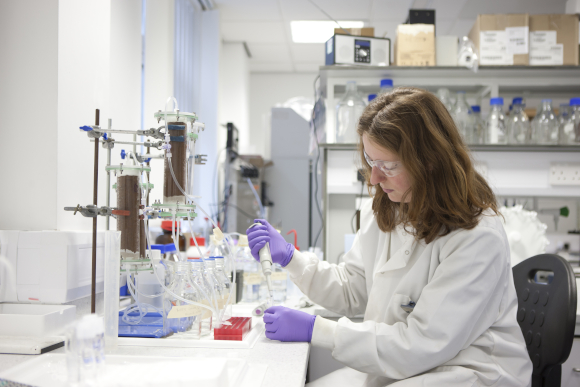
Sediment column set up in the environmental radioactivity lab
© Dalton Nuclear Institute
To support this work, the RADER user facility will deliver a suite of laboratories designed to handle and analyse radioactive samples from engineered and natural environments. The facility will be co-located with Manchester University’s Research Centre for Radwaste Disposal (RCRD) and embedded within the NERC-funded Williamson Research Centre for Molecular Environmental Science (WRC), drawing on established complementary skills and expertise.
Uniquely in the UK, RADER will offer dedicated laboratories enabling users to undertake Low Level Radiometrics, Environmental Characterisation of Solids (inorganic and biological), Environmental Characterisation of Solutions and Sample Preparation, all in one location and with dedicated Experimental Officer support. Combined, these integrated state-of-the-art facilities will enable low level separations and microbiological, mineralogical and molecular-scale environmental research with a wide range of environmentally relevant radionuclides. RADER will support experiments across realistic radionuclide concentration ranges, and offer comprehensive authentic sample analyses.
Relevant topics for investigation within RADER will include radioactive waste disposal, decontamination, land management, effluent treatment and radionuclide transport in the biosphere, especially where radioactive sample handling and characterisation are required.
The new infrastructure being delivered to the RADER user facility is summarised in key areas below, and augments the already strong infrastructure in the WRC. Support is also provided from 'NNUF @ CRR' on aspects of spectroscopy, magnetism, reprocessing and computational modelling. This will create a suite of RADER laboratories able to handle low-level radiochemical separations and environmental chemistry/biogeochemistry experimental work with radioactive samples. RADER facility development was informed by extensive experience of working with radioactive, environmental samples and devised in close consultation with the UK and international academic and industrial user community.